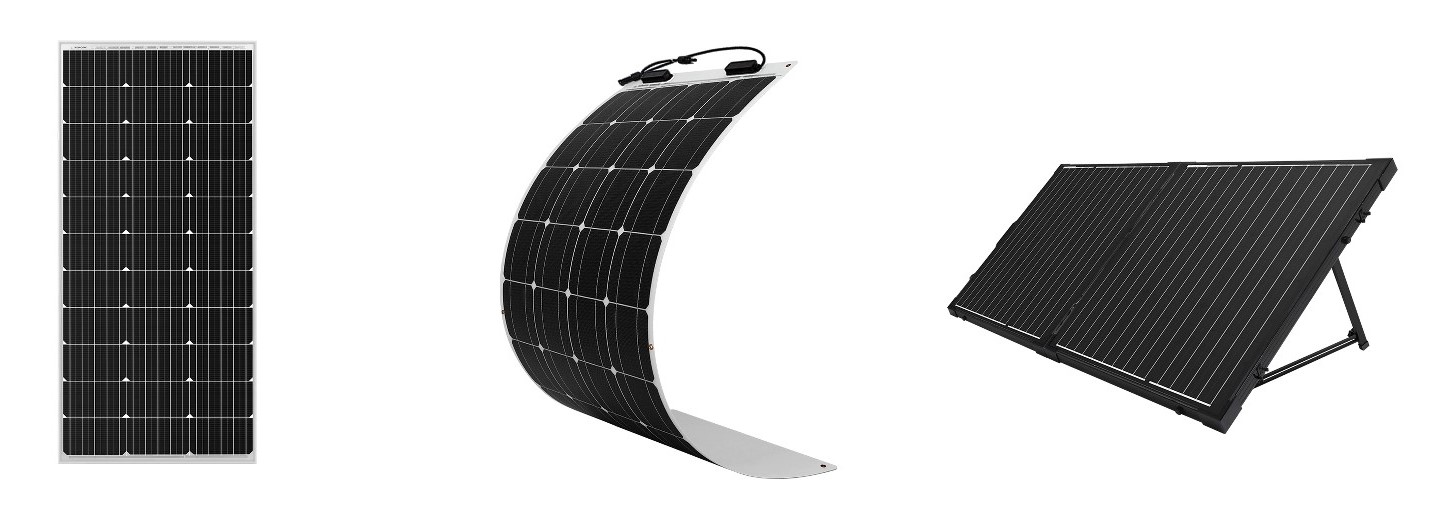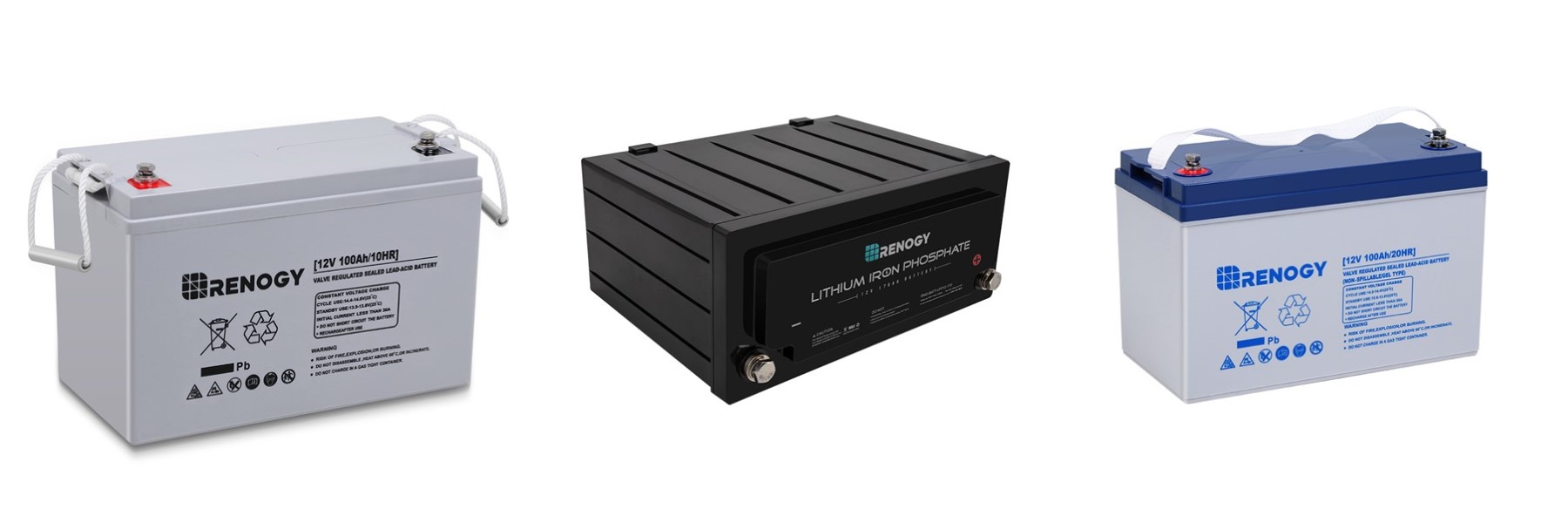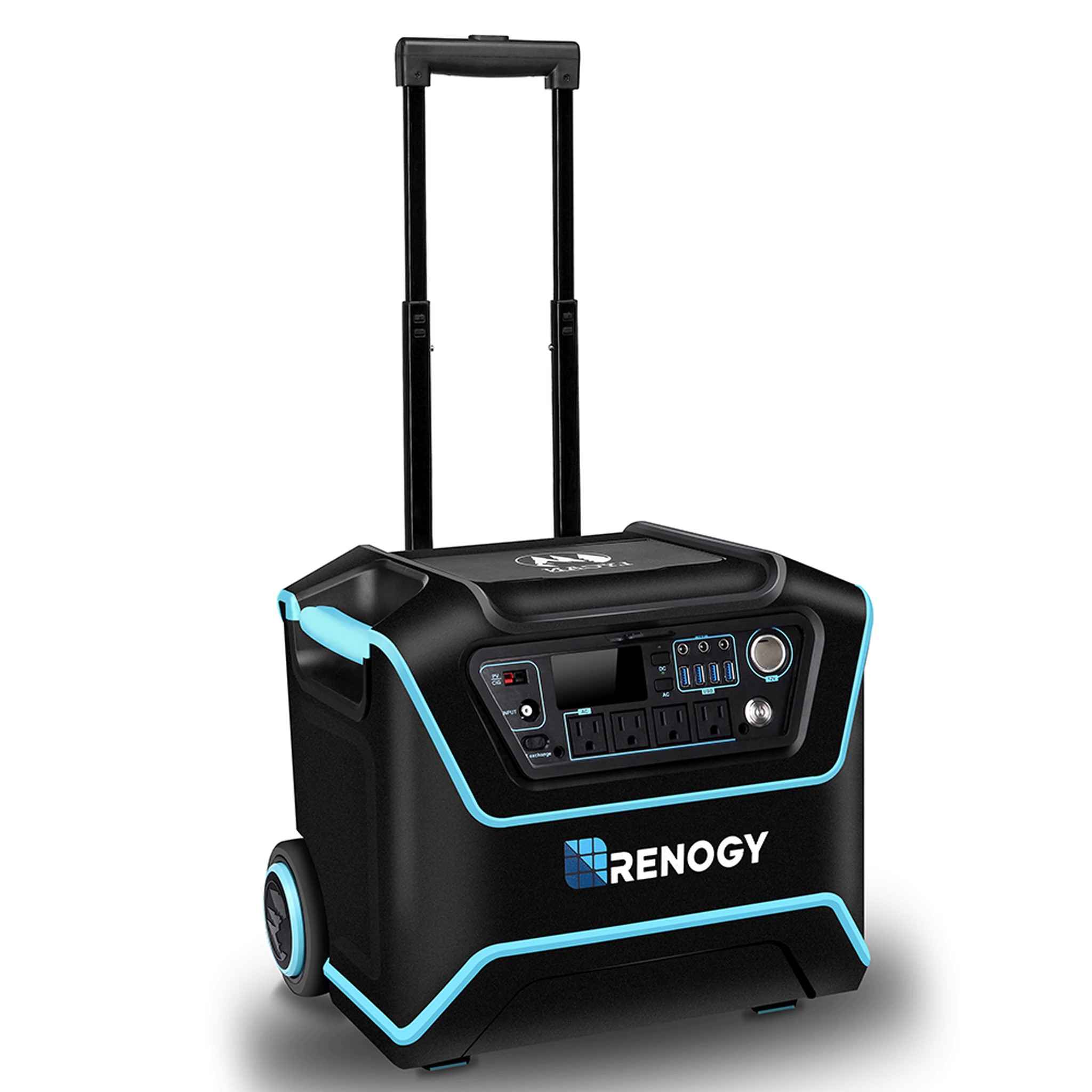Should I purchase an RV solar panel kit?
Taking the headache out of going solar on the open road
With RV sales going through the roof this year due to COVID-19, more and more Americans are dipping their toes in the solar pool to decide if going solar is right for them and their family. There are many benefits to going solar in your RV, from expanding your camping options, ensuring constant and reliable access to electricity, eliminating the need for noisy generators, and living a green lifestyle. Renogy’s RV solar panel kits make it easy to go solar and are definitely worth the consideration, especially for those new to solar.
What are the main components of an RV solar installation?
Similar to a solar installation for the home, the key components of a solar RV installation are:
1. Solar panels
2. Charge Controllers
3. Battery storage
4. Inverters

When it comes to choosing solar panels for your RV, there are some few options to choose from. Panels can be roof-mounted or portable, flexible or rigid, and monocrystalline or polycrystalline.
Polycrystalline vs. Monocrystalline
Polycrystalline panels, which are light blue in color, are cheaper, but they are also less efficient than monocrystalline panels. Monocrystalline solar panels, which are dark blue in color, have the highest efficiency rates and are more space-efficient than polycrystalline panels. However, they are more expensive.
Flexible vs. Rigid Panels
Flexible solar panels weigh less than the rigid solar panels and can be installed directly on the roof of your RV, in contrast to rigid solar panels which stick up above your roof somewhat and can be trickier to place between other components on your roof. Rigid panels, which are more durable, can also be mounted to tilt, which increases their energy production efficiency. They also tend to have a longer lifespan.
Rooftop-mounted vs. Folding Solar Panels
Having roof-mounted panels reduces the risk of theft when you are away from your RV. They also allow for quick battery recharging, without having to fuss setting up your system every time you want to collect energy from the sun.
Suitcase-style solar panels are incredibly convenient portable systems that allow for easy plug-and-play use without having to permanently roof-mount them onto your vehicle. Also, if you have multiple rigs, you can use those same solar panels in different applications. The downside is that you have to set them up each time you want to use them and you can’t use them when you’re away due to theft risk.

Charge controllers sit between the energy source and storage and perform the crucial function of preventing overcharging of batteries by limiting the amount and rate of charge to your batteries. It also prevents battery drainage by shutting down the entire system if your stored power falls below 50 percent capacity.

You’ll also need a way to store all the power you’re generating with your solar panels. This is where batteries come into play.
There’s a range of battery options that range in price from $100 to more than $1200, depending on the technology. Flooded lead acid batteries are the most inexpensive option and are available at most big-box and auto stores. Absorbed glass matt (AGM) batteries store 10 to 15 percent more energy than lead acid batteries and charge up to four times faster. Gel batteries are similar to absorbed glass matt batteries, but have a lower power capacity and longer lifespan than AGM batteries. Lithium iron phosphate batteries are the most expensive option, but also last four times longer than lead-acid batteries and weigh much less.

Inverters turn DC power produced from your solar panels and stored in your battery into AC power. An inverter is necessary to power the common appliances found in your RV, from TVs to microwaves. Inverters range from $150 to more than $350.
What is the investment for RV solar? Is it worth it?
When you add it all up, you’re definitely looking at a decent investment. Because of the variety of factors at play when it comes to system size and cost, complete RV solar systems can range from around $600 for the simplest, smallest set-up to upwards of $2,000 for larger installations. Adding additional panels and batteries will also increase that cost as well.
Renogy offers a range of RV solar kits specifically for motorhome dwellers. This is great for peace of mind and ensures you have all the right components to fit your energy needs. Options range from simple solar kits with folding suitcase panels and a charge controller to complete RV solar system kits with roof mounted panels, charge controller, cabling, cable entry housing, and a bluetooth module. These kits, which can supply between 100 and 400 watts of power, cost between $309.99 and $819.99 based on the size.
How is RV solar different from home solar?
It’s also important to clarify the main differences between how one approaches adding solar to their home and RV. Whereas home solar systems are typically designed to cover all of your home energy needs, RV solar systems are designed to maintain a steady bank of power in your batteries and provide enough power to charge a few appliances in your motorhome.
Who should invest in solar for RV?
Not every RV dweller will have the same solar setup. Here are some questions to consider to help you decide which system is best for you
You’re a weekend warrior: If you only travel in your RV on the weekends or for short periods of time, a complete RV solar system probably doesn’t make the most sense from a financial standpoint. We’d recommend a smaller system, such as one of Renogy’s smaller RV kits, such as the 100 watt 12 volt panel kit.
You’re a boondocker: If you’re regularly parking or camping in areas without hookups for extended periods of time and don’t have access to electricity, a complete RV Solar system with solar panels, a batter, inverter, charge controller, and wiring can be a great investment that will pay off over time. Renogy RV solar kits, which come in varying sizes of 100 up to 400 watts, are the perfect addition to any boondocker’s rig and come equipped with key components, such as a flush mount charge controller and a cable entry housing unit.

You’re a full-timer who regularly stays at parks and campgrounds: If you live in your RV full-time and opt to stay at campgrounds or RV parks that have hook-ups, it most likely doesn’t make financial sense to buy a full solar installation. We’d recommend one of Renogy’s solar power generators, such as the Lycan Powerbox generator.
What if I’m travelling in cold or cloudy areas, such as the Pacific Northwest?
Even if you’re in a cloudy area, solar panels produce around 25 percent as much energy as they would on a sunny one. Also, despite popular belief, solar panels actually operate more efficiently in colder areas than in warmer ones.
Conclusion
Going solar is definitely an investment. However, if installing solar on your RV or utilizing a kit means you won’t be spending money on gas for a generator or hook-up fees at a campground, the system can pay for itself over time. Plus, with decreasing costs of solar, increased efficiency of technology, and the ease of using RV solar kits, there’s never been a better time to add solar on your RV and go off-grid.








